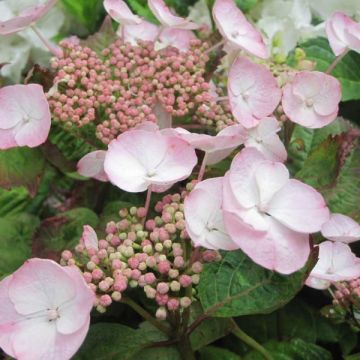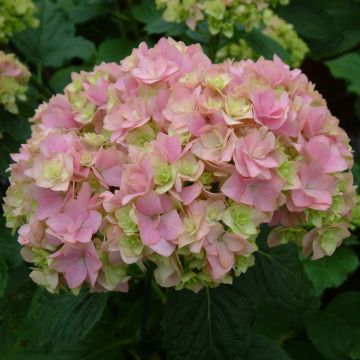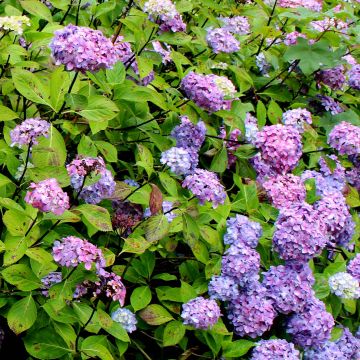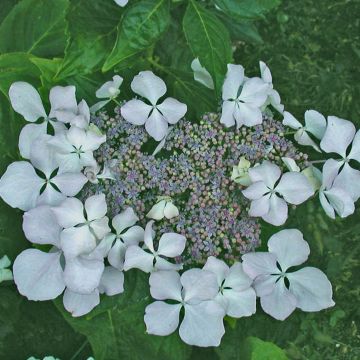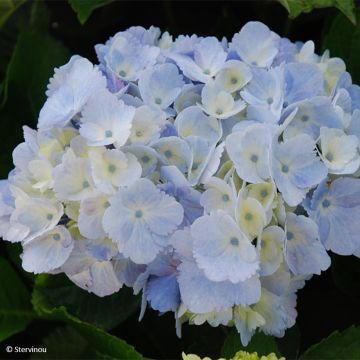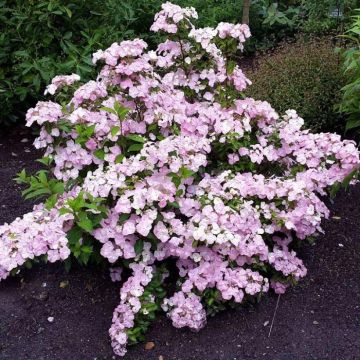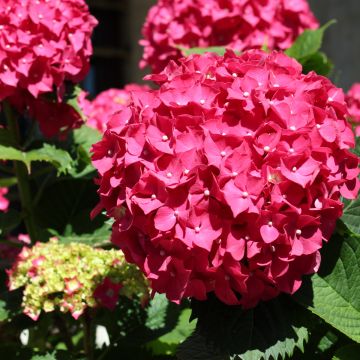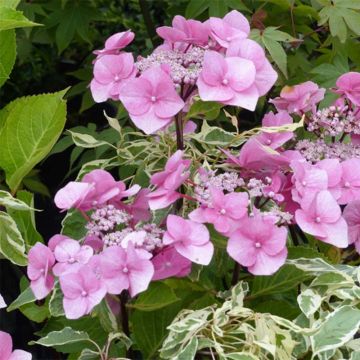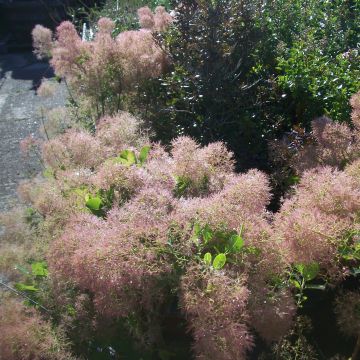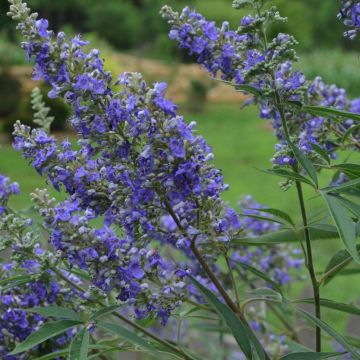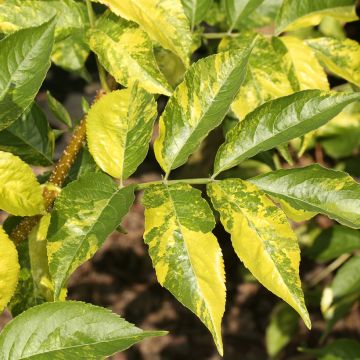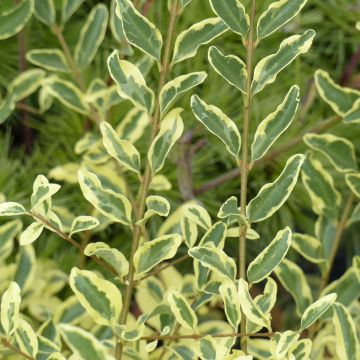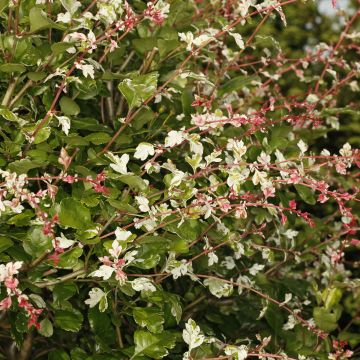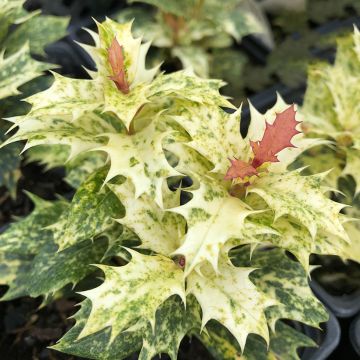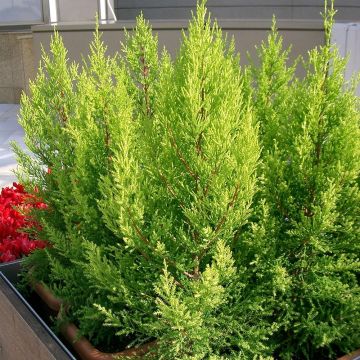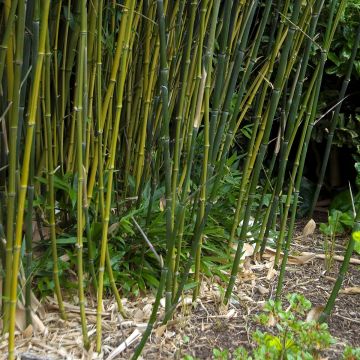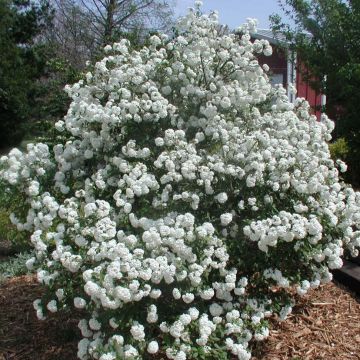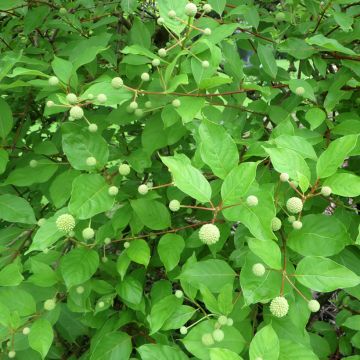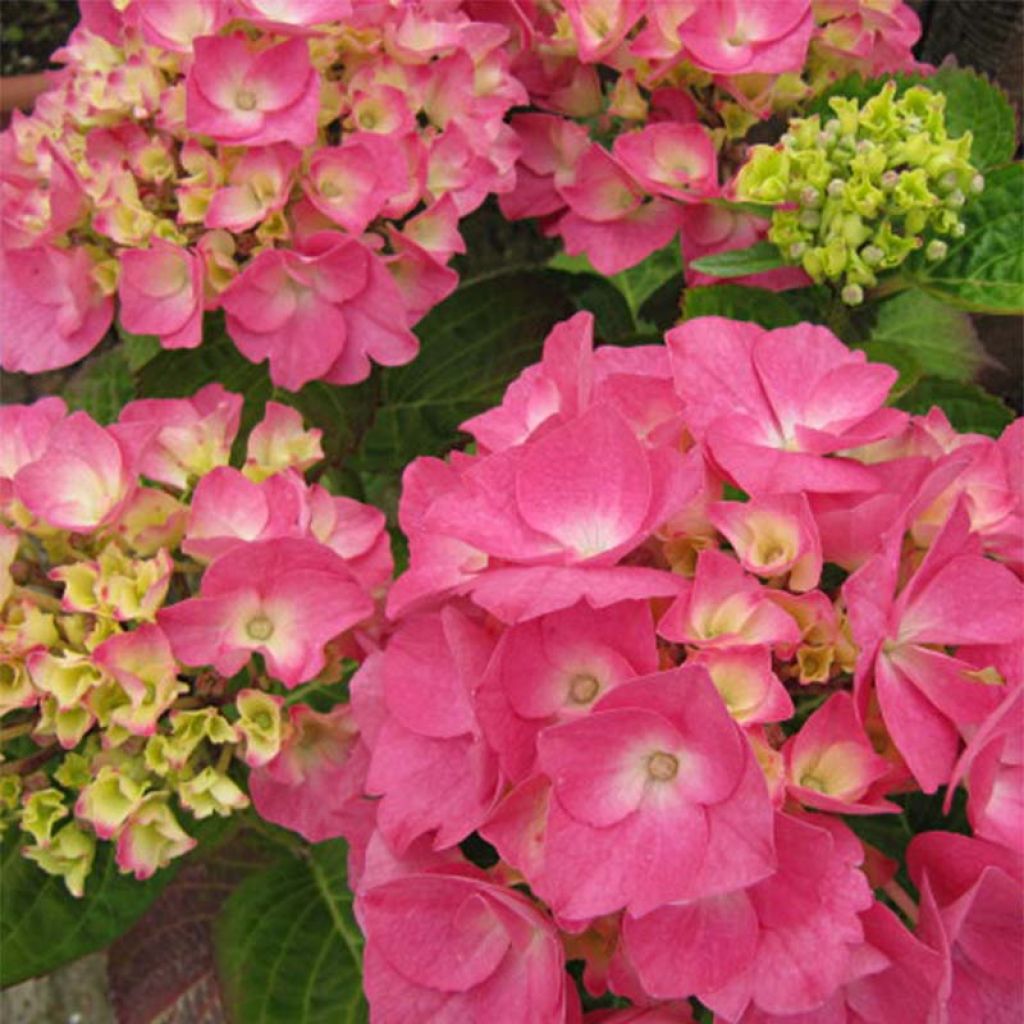

Hydrangea macrophylla Rosita
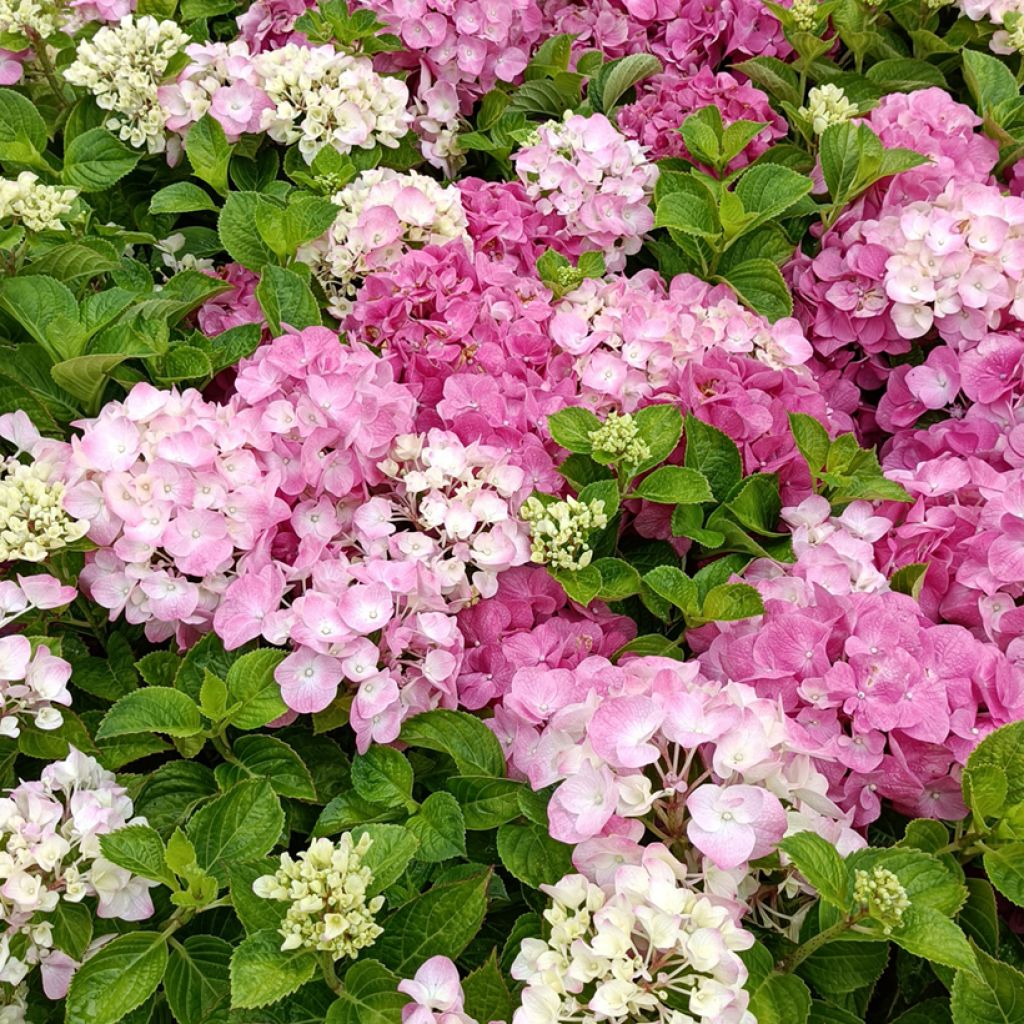

Hydrangea macrophylla Rosita
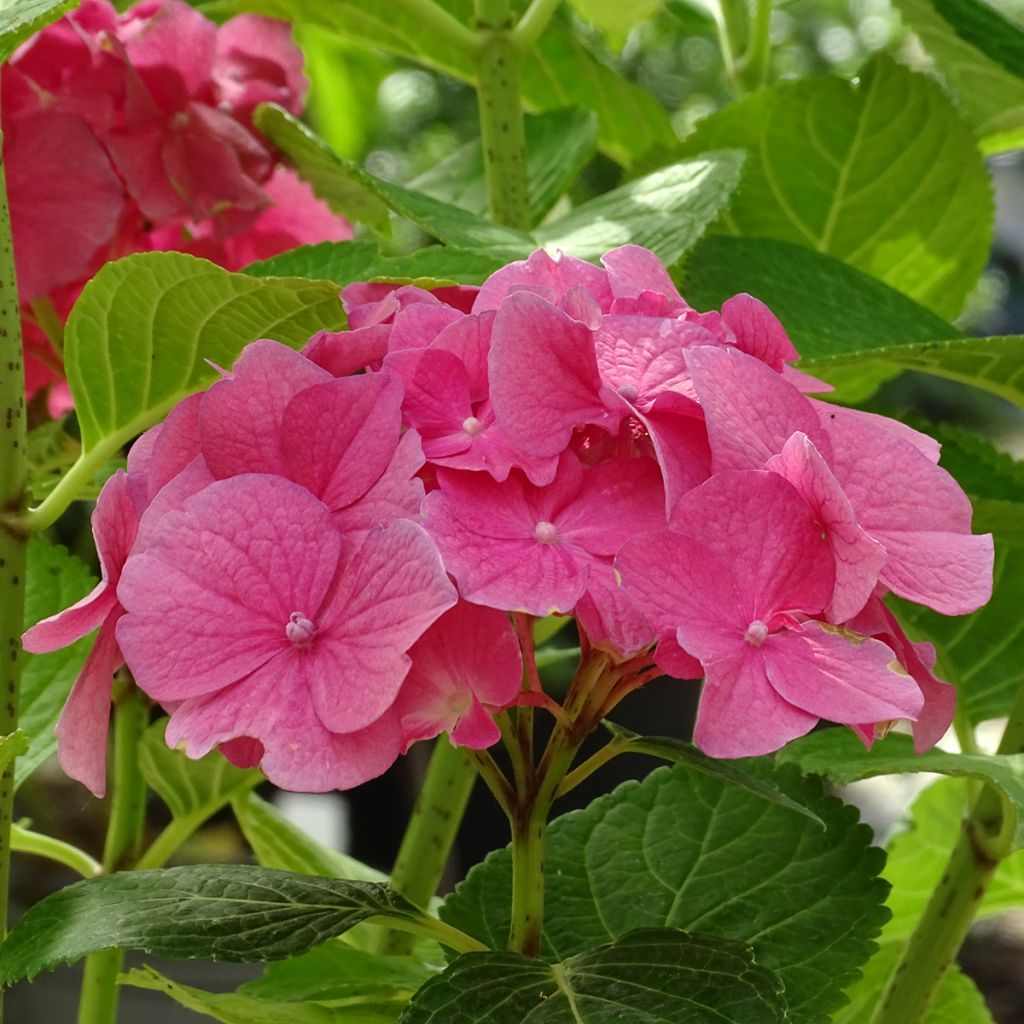

Hydrangea macrophylla Rosita
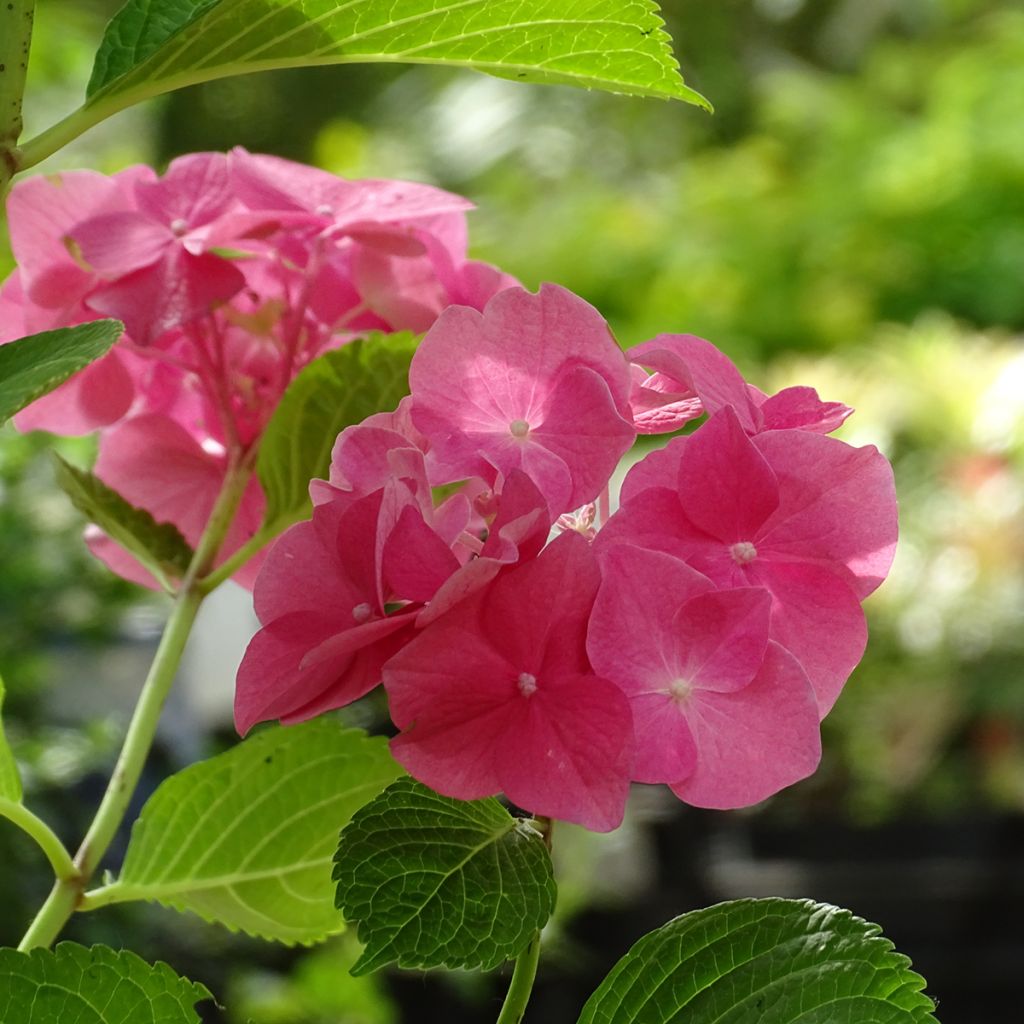

Hydrangea macrophylla Rosita
Hydrangea macrophylla Rosita
Hydrangea macrophylla Rosita
Bigleaf Hydrangea, French Hydrangea
This item cannot be shipped to the selected country
Delivery charge from €5.90
Delivery charge from €5.90
More information
Schedule delivery date,
and select date in basket
This plant carries a 24 months recovery warranty
More information
We guarantee the quality of our plants for a full growing cycle, and will replace at our expense any plant that fails to recover under normal climatic and planting conditions.
From €5.90 for pickup delivery and €6.90 for home delivery
Express home delivery from €8.90.
From €5.90 for pickup delivery and €6.90 for home delivery
Express home delivery from €8.90.

Does this plant fit my garden?
Set up your Plantfit profile →
Description
The Hydrangea macrophylla 'Rosita' is a fairly old, floriferous, hardy and vigorous variety of hydrangea that has proven itself in both the garden and in flowering pots. It is a fairly compact and rounded bush that produces large, round flower heads from June onwards, with a bright pink hue that turns blue in acidic soil. They bloom abundantly and regularly throughout the summer. Like all hydrangeas, it prefers soil that is low in limestone. A reliable choice, it will find its place in a large pot on the terrace or in shaded flowerbeds.
The Hydrangea macrophylla 'Rosita', obtained in Belgium before 1963, is one of the many hybrids obtained through the cross-breeding of hardy species belonging to the hydrangea family, native to China and Japan. This compact bush has a rounded habit, as wide as it is tall, reaching 1.20 m (3 ft 11 in) in all directions at maturity. In summer, from June to September, its small sterile flowers form round flower heads, reaching up to 15 cm (5.9 in) in diameter and deep pink in colour, with mauve reflections in acidic soil. They are borne on sturdy stems that are one year or older. The flowering is accompanied by small, firm and lush green foliage, which takes on carmine pink shades in autumn before falling. The leaves are opposite, about ten centimetres in length. They are simple, ovate to elliptical, ending in a pointed tip, and strongly toothed like a saw. Hydrangeas can live for at least 50 years.
The 'Rosita' Hydrangea is one of the best pink varieties, with a very stable colour. It has excellent hardiness and a very vigorous flowering. Hydrangeas are well-known for brightening up the north side of houses. This one will thrive in an east or west exposure that is not too hot, in flowerbeds as well as in hedges. This variety is suitable for cultivation in open ground or in containers, which can be placed on the terrace or near the entrance. Although these plants dislike limestone, they are not strictly plants for heathland soil. Pair them with Magellan fuchsias, annual impatiens, or plant spring-flowering bulbs in front of their round silhouette. Enjoy their sumptuous flowers in the garden or in the house for a long time.
Report an error about the product description
Hydrangea macrophylla Rosita in pictures
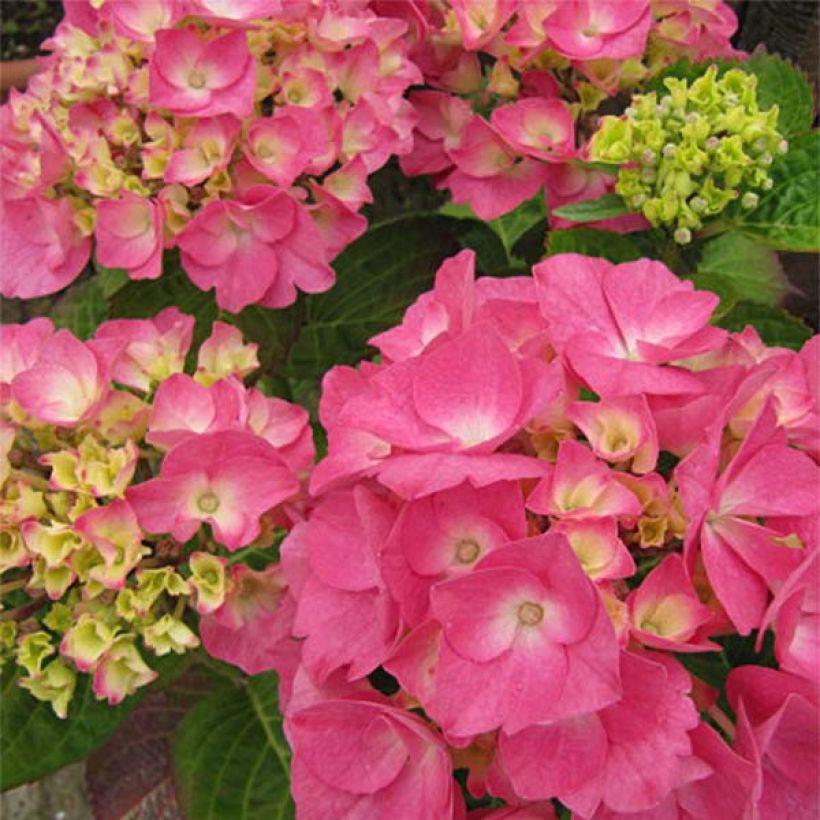

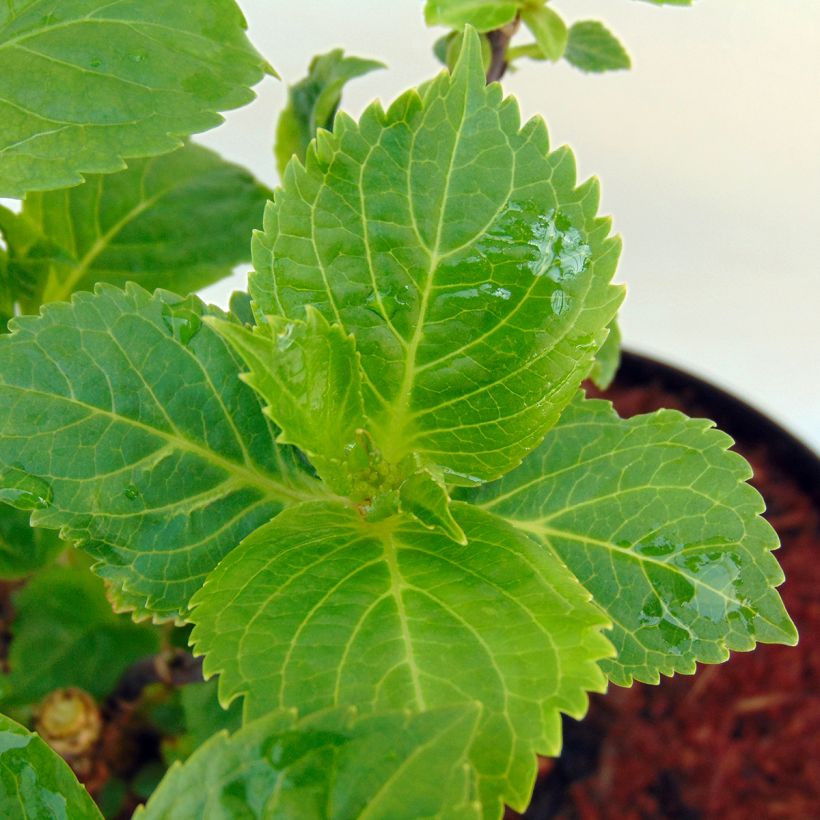

Plant habit
Flowering
Foliage
Botanical data
Hydrangea
macrophylla
Rosita
Hydrangéacées
Bigleaf Hydrangea, French Hydrangea
Cultivar or hybrid
Other Hydrangea Macrophylla
Planting and care
Plant the Rosita hydrangea macrophylla in spring or early autumn, preferably in a slightly shaded position, for example against an east- or even north facing wall. Protect it from cold, drying winds. It does not require acidic soil, but appreciates a deep, moist but well-drained and fertile soil, improved with a good base fertiliser before planting. If the soil is dry at the base of the wall, place the root ball at least 30-40 cm (11.8 - 15.7 in) away from the base of the wall and add well-rotted compost to improve water retention. Very hardy, it doesn't mind being planted in cold regions. To correctly prune your plant, removing any wilted flowers from the first bud or pair of buds directly below is essential. Once the plant has fully grown, cut back the oldest stems at the base by a quarter to a third to encourage the formation of new, young shoots. It's recommended to carry out this pruning every year during March and April.
Planting period
Intended location
Care
-
, onOrder confirmed
Reply from on Promesse de fleurs
Hedge shrubs
Haven't found what you were looking for?
Hardiness is the lowest winter temperature a plant can endure without suffering serious damage or even dying. However, hardiness is affected by location (a sheltered area, such as a patio), protection (winter cover) and soil type (hardiness is improved by well-drained soil).

Photo Sharing Terms & Conditions
In order to encourage gardeners to interact and share their experiences, Promesse de fleurs offers various media enabling content to be uploaded onto its Site - in particular via the ‘Photo sharing’ module.
The User agrees to refrain from:
- Posting any content that is illegal, prejudicial, insulting, racist, inciteful to hatred, revisionist, contrary to public decency, that infringes on privacy or on the privacy rights of third parties, in particular the publicity rights of persons and goods, intellectual property rights, or the right to privacy.
- Submitting content on behalf of a third party;
- Impersonate the identity of a third party and/or publish any personal information about a third party;
In general, the User undertakes to refrain from any unethical behaviour.
All Content (in particular text, comments, files, images, photos, videos, creative works, etc.), which may be subject to property or intellectual property rights, image or other private rights, shall remain the property of the User, subject to the limited rights granted by the terms of the licence granted by Promesse de fleurs as stated below. Users are at liberty to publish or not to publish such Content on the Site, notably via the ‘Photo Sharing’ facility, and accept that this Content shall be made public and freely accessible, notably on the Internet.
Users further acknowledge, undertake to have ,and guarantee that they hold all necessary rights and permissions to publish such material on the Site, in particular with regard to the legislation in force pertaining to any privacy, property, intellectual property, image, or contractual rights, or rights of any other nature. By publishing such Content on the Site, Users acknowledge accepting full liability as publishers of the Content within the meaning of the law, and grant Promesse de fleurs, free of charge, an inclusive, worldwide licence for the said Content for the entire duration of its publication, including all reproduction, representation, up/downloading, displaying, performing, transmission, and storage rights.
Users also grant permission for their name to be linked to the Content and accept that this link may not always be made available.
By engaging in posting material, Users consent to their Content becoming automatically accessible on the Internet, in particular on other sites and/or blogs and/or web pages of the Promesse de fleurs site, including in particular social pages and the Promesse de fleurs catalogue.
Users may secure the removal of entrusted content free of charge by issuing a simple request via our contact form.
The flowering period indicated on our website applies to countries and regions located in USDA zone 8 (France, the United Kingdom, Ireland, the Netherlands, etc.)
It will vary according to where you live:
- In zones 9 to 10 (Italy, Spain, Greece, etc.), flowering will occur about 2 to 4 weeks earlier.
- In zones 6 to 7 (Germany, Poland, Slovenia, and lower mountainous regions), flowering will be delayed by 2 to 3 weeks.
- In zone 5 (Central Europe, Scandinavia), blooming will be delayed by 3 to 5 weeks.
In temperate climates, pruning of spring-flowering shrubs (forsythia, spireas, etc.) should be done just after flowering.
Pruning of summer-flowering shrubs (Indian Lilac, Perovskia, etc.) can be done in winter or spring.
In cold regions as well as with frost-sensitive plants, avoid pruning too early when severe frosts may still occur.
The planting period indicated on our website applies to countries and regions located in USDA zone 8 (France, United Kingdom, Ireland, Netherlands).
It will vary according to where you live:
- In Mediterranean zones (Marseille, Madrid, Milan, etc.), autumn and winter are the best planting periods.
- In continental zones (Strasbourg, Munich, Vienna, etc.), delay planting by 2 to 3 weeks in spring and bring it forward by 2 to 4 weeks in autumn.
- In mountainous regions (the Alps, Pyrenees, Carpathians, etc.), it is best to plant in late spring (May-June) or late summer (August-September).
The harvesting period indicated on our website applies to countries and regions in USDA zone 8 (France, England, Ireland, the Netherlands).
In colder areas (Scandinavia, Poland, Austria...) fruit and vegetable harvests are likely to be delayed by 3-4 weeks.
In warmer areas (Italy, Spain, Greece, etc.), harvesting will probably take place earlier, depending on weather conditions.
The sowing periods indicated on our website apply to countries and regions within USDA Zone 8 (France, UK, Ireland, Netherlands).
In colder areas (Scandinavia, Poland, Austria...), delay any outdoor sowing by 3-4 weeks, or sow under glass.
In warmer climes (Italy, Spain, Greece, etc.), bring outdoor sowing forward by a few weeks.

































